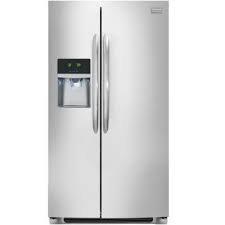Troubleshooting and Repair Tips - Symptom -
Not Cooling
A refrigerator not cooling well can be caused by a number of different things. A refrigerator's operation is dependent on a several sub-systems working in proper order. The sealed system, which contains the freon and involves the compressor, is what moves the heat from the refrigerator - in other words, performs the actual cooling. The evaporator coils get well below zero degrees Fahrenheit. A fan passes air over these coils and distributes it throughout the freezer and the refrigerator. When this sealed system is not functioning properly from either a freon leak, bad compressor, non-starting compressor, or system restrictions, the refrigerator will not cool well or at all. The defrost system of a refrigerator melts the ice build-up from the evaporator coils periodically, so that the air can continue to efficiently pass over the coils to become cold again and redistribute throughout the unit. Defrost systems fail often - usually because the heater, defrost thermostat, or defrost control fails. Another of the many reasons a refrigerator won't cool well is if moisture gets in and crystalizes in the air vents - clogging them up, and disallowing the air to flow properly. Also, the refrigerator must get rid of the heat properly - as a refrigerator is just a heat pump in reverse. Either in the back of the refrigerator or underneath, are consdenser coils that get very hot and radiate heat - either passively or by use of a condensor fan. Although there are other reasons a refrigerator does not cool well, these are the most common. Below are described several "refrigerator not cooling" scenarios and their resolutions.
GE Refrigerator Not Cooling Well - Model number GSH25JSXBSS, back wall of freezer (inside) covered with frost.
- Remove food, shelves, and ice bin.
- Place a one inch ball of plumber's putting over the defrost drain hole as shown.
- Place at least 3 towels at the bottom of the freezer as shown. There will be a lot of water.
- Place a towel on the floor and monitor to make sure no water is left on the floor or under the refrigerator.
- You can use a 2-gallon pressurized sprayer (found at a home improvement store) filled with hot tap water, to clear the frost from the back wall.
- Use of a sprayer can reduce the total repair time to as low as 30 minutes, but does produce lots of water - so be prepared.
.
- Remove the back wall as shown.
- Note the coils covered with frost in the attached picture.
- Use the sprayer to clear the frost from the top-down.
- Remove the defrost heater as shown.
- Test the defrost heater with a multimeter as shown. It should read less than 100 ohms.
- The heater in this case measured in the megaohm range - obviously a bad heater.
- If the heater is bad, replace it. The part number is WR51X10055.
- Remove the defrost thermistor as shown in the picture. The ones with the black rubber sealant tend to go bad prematurely.
- If the thermistor is of that type, replace it. The part number for the thermistor is WR55X10025.
- Use crimp connectors and fill with silicon to keep the moisture out.
- Straight connectors are shown in the picture, but bell connectors are recommended.
- The defrost thermostat or bimetal (to right of thermistor) sometimes goes bad as well. If it is split open, replace it. The part number is WR50X10068
- I usually replace the defrost thermosat regardless as they often go bad - and they are cheap.
- Important - When finished installing the components, remove the plumber's putty from the defrost drain hole.
- Make sure all wires are tucked away as shown in the picture and replace the back wall.
- Plug refrigerator back in and make sure the temperature drops at the fan output.
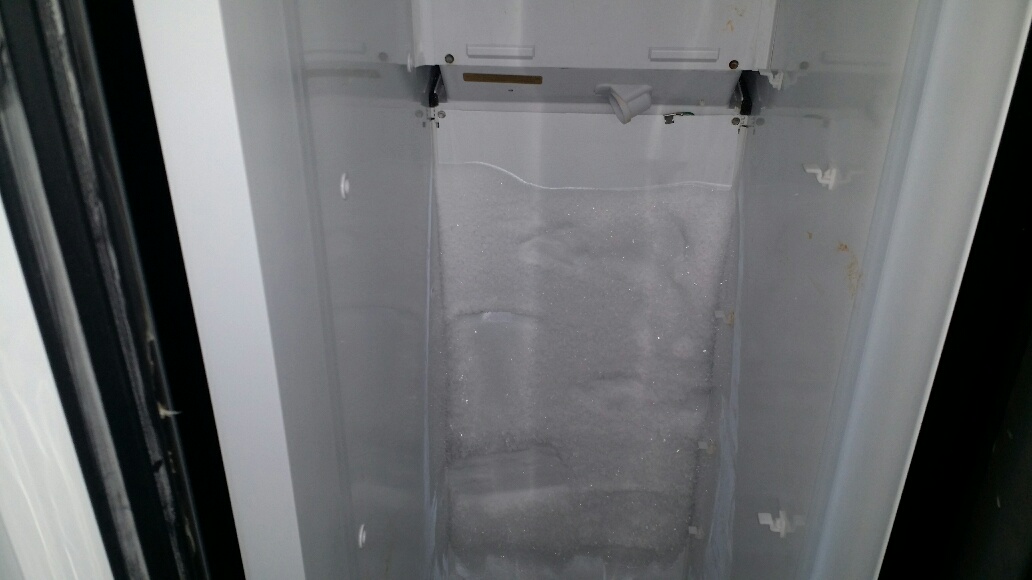 Frost covered back wall of GE refrigerator.
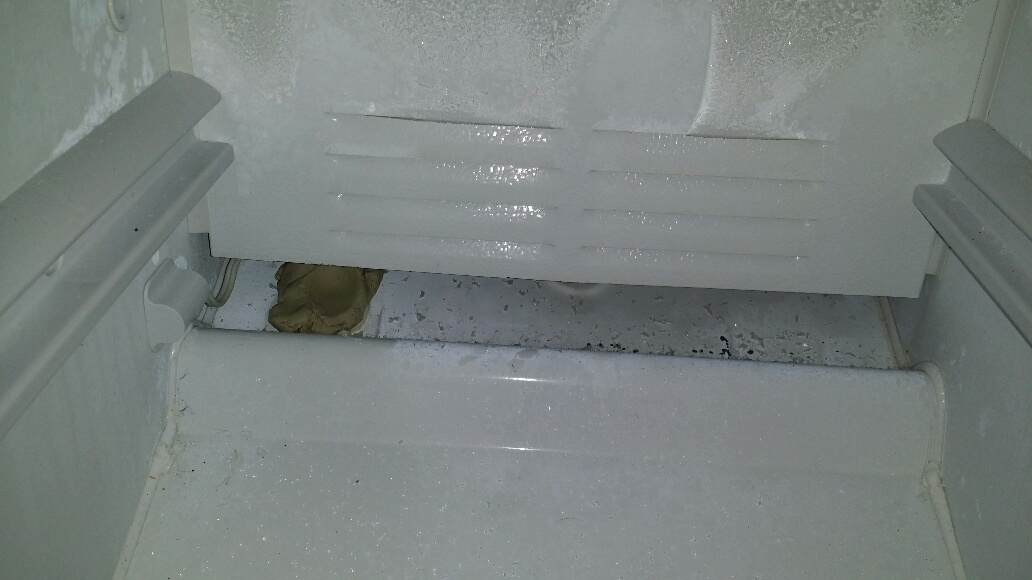 Cover defrost drain with plumbers putty.
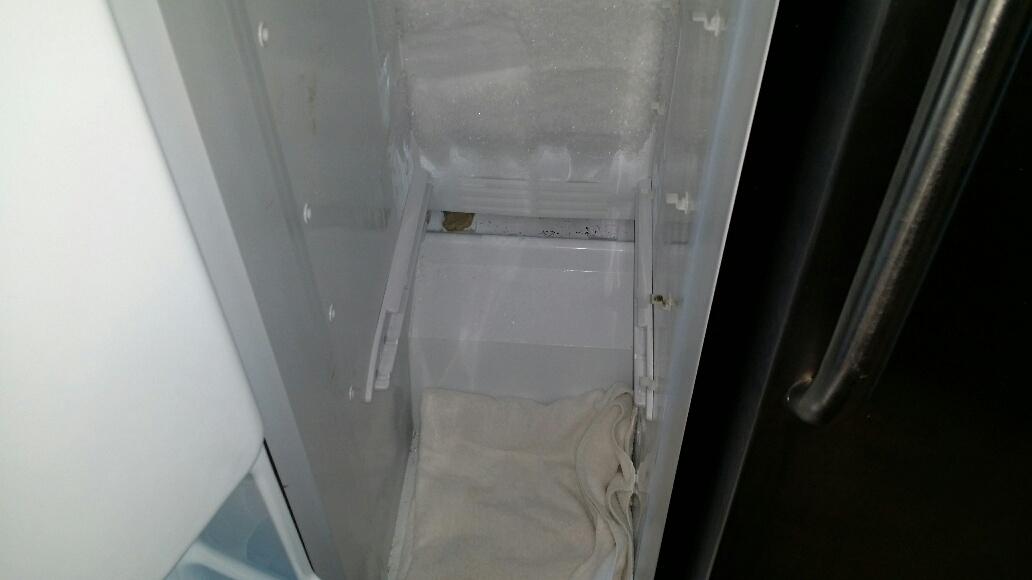 Place towels at the bottom of freezer.
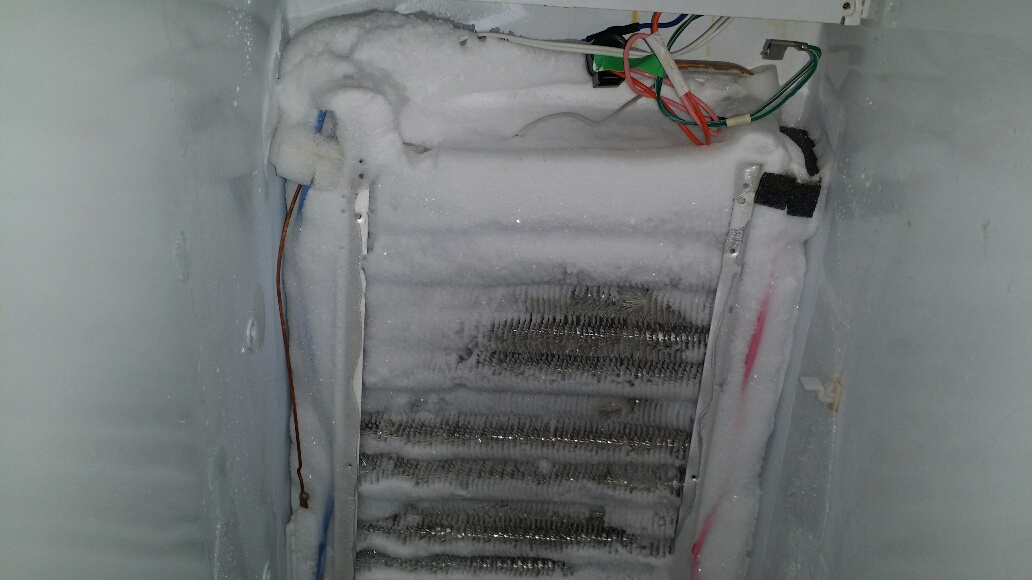 Totally iced up evaporator coils.
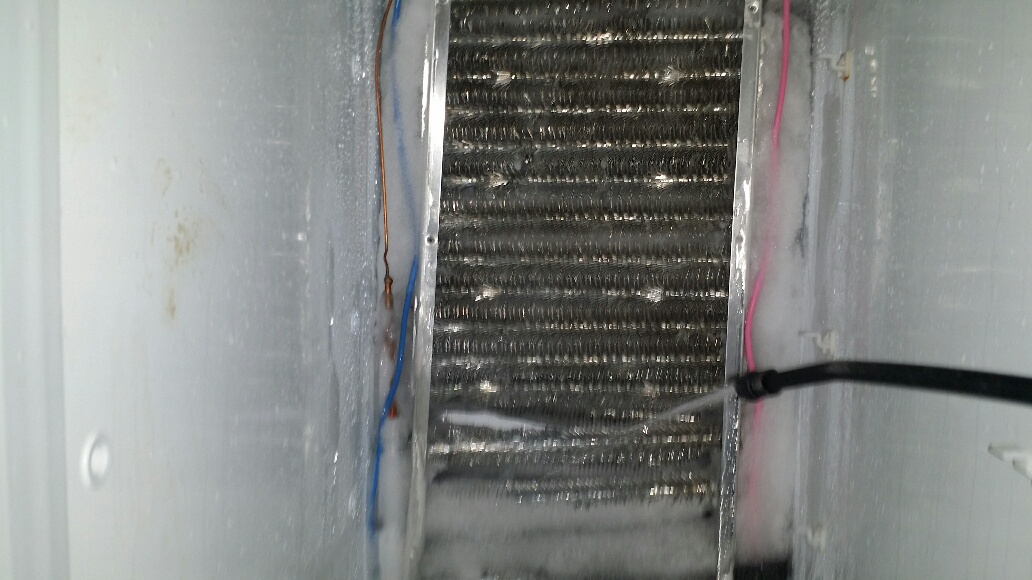 Using a sprayer on the evaporator coils.
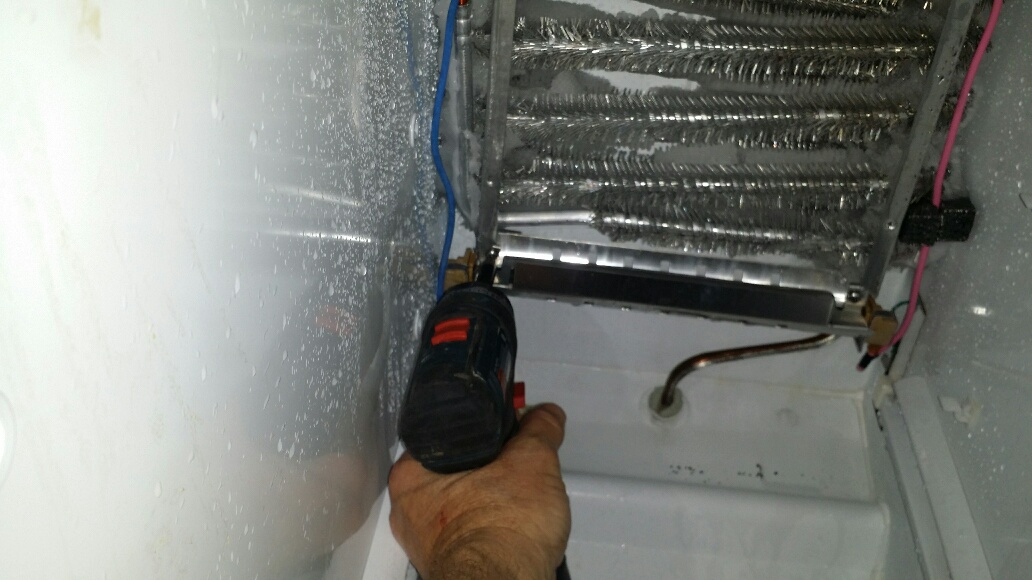 Defrost heater removal
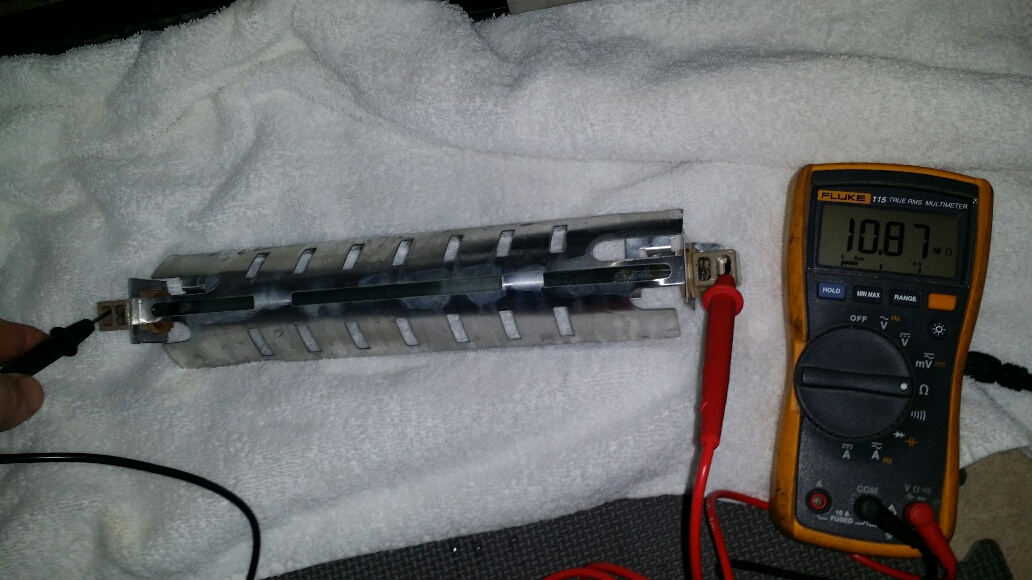 Defrost heater resistance test - bad heater.
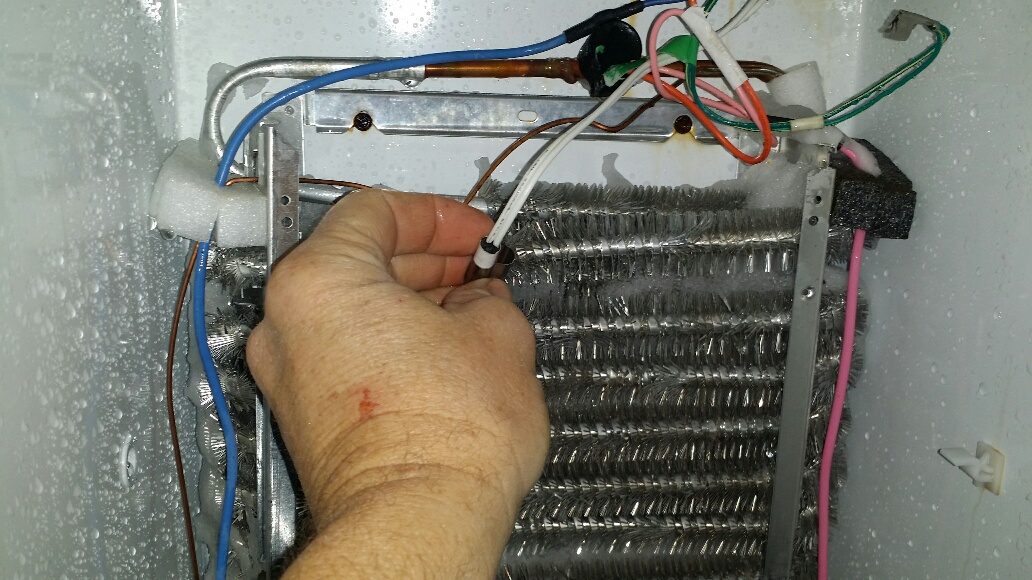 Defrost (evaporator) thermistor with black sealant.
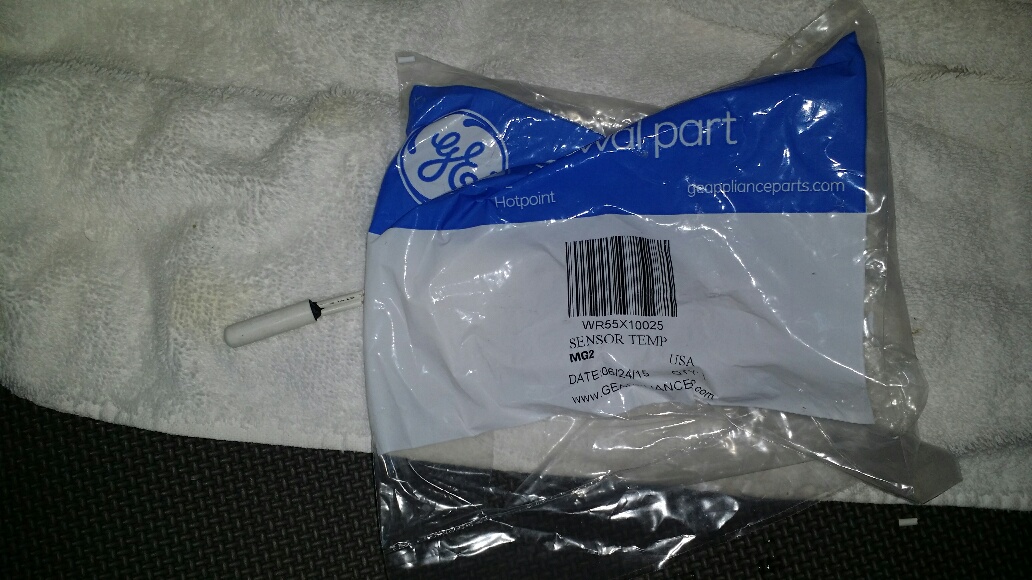 New evaporator thermistor in bag next to old thermistor.
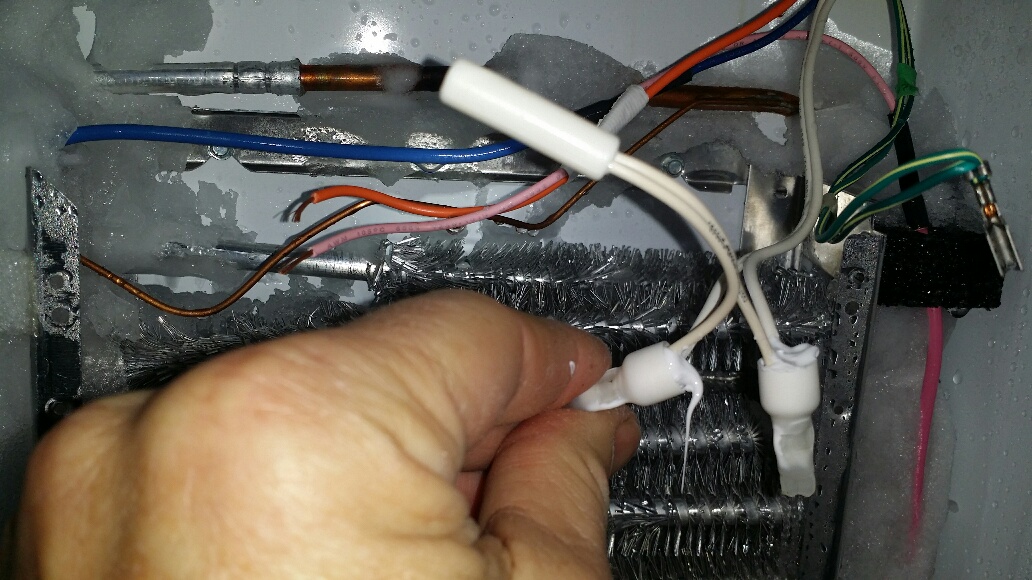 Crimp bell connectors and sealant for evaporator thermistor.
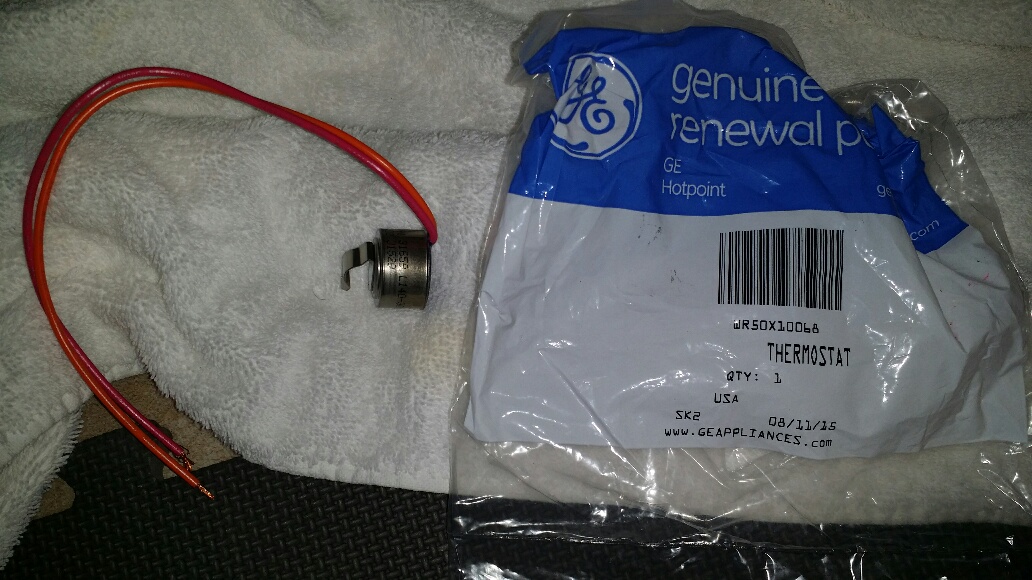 New defrost thermosat with bag.
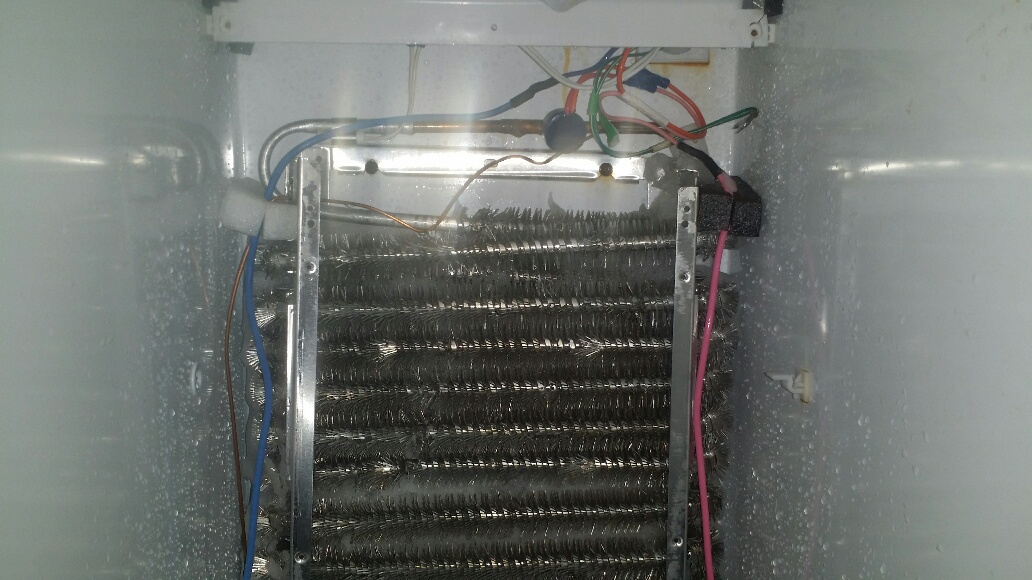 Fully defrosted coils with new components.
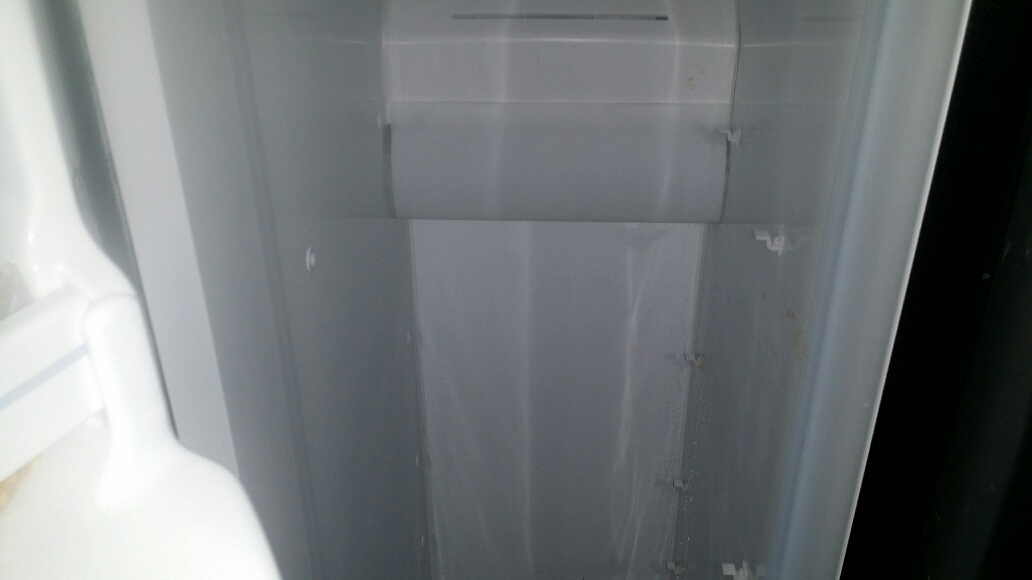 Completed defrost repair with clean back-wall.
|
